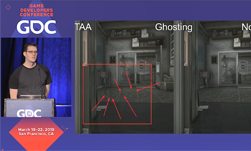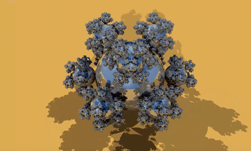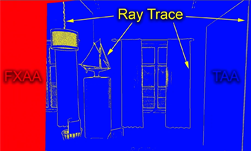The next generation of antialiasing is called ATAA, which stands for “Adaptive Temporal Antialiasing”. This new approach solves for the weakness of TAA (temporal anti-aliasing) – blurring and ghosting artifacts – while remaining light enough to avoid introducing a significant performance hit. ATAA results are remarkably close to what a developer would achieve through 16x supersampling, with operations that fall within a 16ms frame budget.
“We want to redefine what anti-aliasing is,” explained Adam Marrs, Senior Graphics Engineer at NVIDIA. “We aim to find a practical algorithm that’s a hybrid of rasterization and ray tracing, since we now have that capability.”
At GDC 19, Adam gave a full presentation on the topic, called Improving Temporal Anti-Aliasing with Adaptive Ray Tracing. You can see the talk in its entirety here. Below is an excerpt from Adam’s talk, where he details the history of anti-aliasing, and makes a compelling argument for moving beyond TAA.
The full talk is available here. An NVIDIA Registered Developer membership is required to access this content; registration is free, and it takes less than one minute to complete. We also recommend that you read Chapter 22 of Ray Tracing Gems, entitled “Improving Temporal Antialiasing using Adaptive Ray Tracing”. A free PDF that includes this chapter of the book can be found here.










